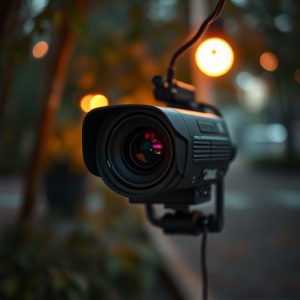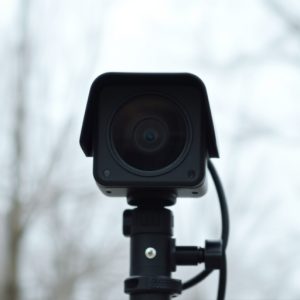Countering Mini Surveillance Cameras: Apartment Sweep Guide
Mini surveillance cameras have become popular for apartment security, offering wireless installation…….
Mini surveillance cameras have become popular for apartment security, offering wireless installation, motion detection, and low-light performance via smartphone apps. Counter surveillance sweeps require legal knowledge, resident consent, and specialized equipment like thermal imaging devices, metal detectors, and EMF scanners to detect hidden cameras in high-risk areas. Post-sweep analysis examines data for vulnerabilities, informing upgrades like lock changes or strategic camera placements for enhanced apartment security.
In today’s digital age, privacy concerns have surged, particularly in residential settings. This guide delves into the art of counter surveillance sweeps, focusing on mini surveillance cameras—their types and applications in apartments. We explore strategic planning, from legal considerations to preparation, and present execution techniques using specialized equipment and tactics. Post-sweep analysis offers insights for data interpretation and enhancing security. Stay ahead of hidden threats with this comprehensive resource for maintaining your apartment’s privacy.
- Understanding Mini Surveillance Cameras: Types and Applications
- Planning a Counter Surveillance Sweep: Preparation and Legal Considerations
- Execution Techniques: Equipment, Tactics, and Procedures
- Post-Sweep Analysis: Data Interpretation and Security Enhancements
Understanding Mini Surveillance Cameras: Types and Applications
Mini surveillance cameras, also known as hidden or compact cameras, have revolutionized the field of security and surveillance due to their discreet nature and advanced capabilities. These tiny devices come in various types, each with unique features and applications. For apartments, mini surveillance cameras offer a subtle yet effective solution for homeowners seeking to enhance their safety without compromising aesthetics.
Common types include wireless cameras that can be easily installed in corners or hidden spaces, providing real-time footage access via smartphone apps. Some models feature infrared capabilities, ideal for low-light conditions, while others incorporate motion sensors to trigger recordings only when activity is detected. This technology is not just confined to apartments; it’s widely used in offices, retail stores, and even vehicles, ensuring 24/7 monitoring and peace of mind.
Planning a Counter Surveillance Sweep: Preparation and Legal Considerations
When planning a counter surveillance sweep, especially in residential settings like apartments, preparation is key. This involves understanding the legal framework surrounding privacy and surveillance, particularly with regard to mini surveillance cameras for apartments. It’s crucial to ensure that any actions taken comply with local laws to avoid legal repercussions. Begin by identifying potential areas where covert surveillance might be operational, such as hidden cameras in common areas or within units. Conduct a thorough inspection using specialized equipment to detect any signs of unauthorized monitoring devices.
Legal considerations should also guide the scope and intensity of the sweep. This includes obtaining appropriate consent from residents, especially when accessing private spaces. It’s important to inform all parties involved about the impending sweep to maintain transparency. Additionally, consider engaging professionals with expertise in counter surveillance techniques and legal knowledge to ensure the sweep is conducted ethically and effectively, while respecting the privacy rights of all individuals concerned.
Execution Techniques: Equipment, Tactics, and Procedures
When executing a counter surveillance sweep, professionals rely on specialized equipment tailored to detect and dismantle hidden mini surveillance cameras for apartments. This includes advanced thermal imaging devices that can pinpoint heat signatures indicative of covert cameras, as well as long-range infrared cameras capable of capturing high-resolution images in low light conditions. Handheld metal detectors and electromagnetic field (EMF) scanners are also integral tools, aiding in the identification of signal emissions from hidden electronic devices.
Tactics employed during these sweeps involve strategic searches of high-risk areas such as windows, doors, and corners, where mini cameras are most commonly placed. Procedures dictate a meticulous approach, including the use of protective gear to minimize electromagnetic signatures and ensuring all equipment is regularly calibrated for accuracy. Team coordination is paramount, with designated roles for each member to maximize efficiency and thoroughness in countering surveillance measures.
Post-Sweep Analysis: Data Interpretation and Security Enhancements
Post-sweep analysis is a critical phase in any counter surveillance sweep, especially when focusing on apartment complexes. After the initial sweep with mini surveillance cameras for apartments and other advanced tools, the collected data needs to be meticulously interpreted to identify potential security gaps. This involves comprehensive reviews of footage, logs, and sensor readings to uncover any unusual patterns or signs of unauthorized access.
The insights gained from this analysis stage are invaluable for enhancing apartment complex security. It allows management and security personnel to make informed decisions about implementing new measures, such as upgrading locks, installing additional cameras in strategic locations, or even reconfiguring building layouts for better visibility and accessibility control. Regular post-sweep analyses can significantly contribute to a proactive, dynamic security approach, ensuring the safety and peace of mind of all residents.
In the realm of counter surveillance sweeps, understanding mini surveillance cameras and their applications is a game changer. By equipping ourselves with the right tools and tactics, as outlined in this professional methods guide, we can effectively plan, execute, and analyze these operations. Whether targeting hidden cameras in apartments or navigating complex legal considerations, mastering these techniques enables us to enhance security measures and protect privacy. Remember that staying one step ahead of potential threats is crucial, and this guide serves as a vital resource for achieving just that.


